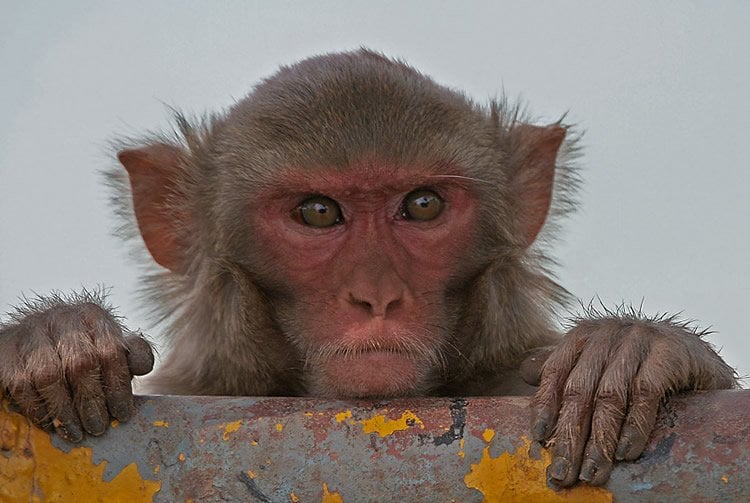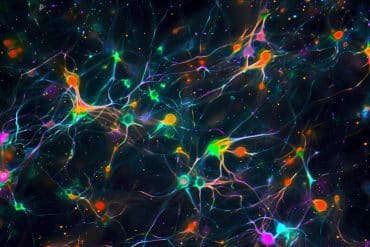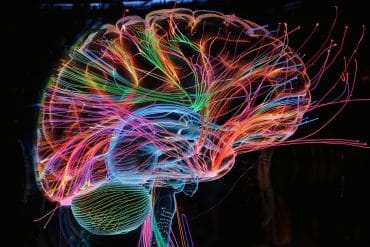Summary: A new study that looks at the development of rhesus monkey brains could shed light on the neurodevelopmental processes involved in disorders such as schizophrenia and autism in humans.
Source: Baylor College of Medicine.
Scientists have elucidated the genetic programs that guide the formation and development of specific regions within the brain of rhesus monkeys. This study is important because it can help better understand how the human brain develops and identify neurodevelopmental processes involved in disorders such as autism spectrum disorders and schizophrenia. The results appear today in Nature.
This work was designed and directed by investigators from the Allen Institute for Brain Sciences in Seattle, WA, and involved dozens of scientists from various institutions across the world, including Baylor College of Medicine.
Dr. Ed Lein, investigator at the Allen Institute, and colleagues created a high-resolution atlas of the development of rhesus monkey brain that uncovers, in fine levels of anatomical detail, how gene expression changes across time, from early gestation to young adulthood. “This exceptional dataset is useful for exploring precisely where and when genes are active in relation to the events of brain development and the onset of brain disorders,” said Lein.
At the Human Genome Sequencing Center (HGSC) at Baylor, Dr. Jeffrey Rogers, associate professor of molecular and human genetics, and Dr. Richard Gibbs, professor and Wofford Cain Chair of molecular and human genetics, and director of the HGSC, contributed to this work by helping to associate observed changes in gene expression during development with significant human disease characteristics.
Overall, the atlas shows that the most dynamic changes happen prenatally, then decline in the months after birth and that cortical areas acquire their adult-like molecular profiles surprisingly late in postnatal development. Genes previously linked to neurodevelopmental disorders are shown to be expressed together in disease-specific patterns within the developing neocortex.

“This ground breaking work at the Allen Brain Institute dramatically advances our understanding of primate brain biology,” said Gibbs.
The study also indicates that the patterns of gene expression during human development are more similar to those of monkeys than to those of rodents; the similarity between human and rhesus is 86 percent. This confirms the value of the rhesus monkey as a nonhuman primate model of human brain development and disease. The Baylor HGSC has played a leading role in the sequencing and subsequent genomic analysis of rhesus monkeys‘ genetic material.
“The extensive spatial and temporal information about gene expression assembled here for the developing primate brain is truly unique. This work provides a remarkable platform for future studies that investigate both the fundamentals of normal brain development in an outstanding model for humans, and the details of developmental processes that are implicated in human psychiatric diseases such as autism spectrum disorders and schizophrenia,” said Rogers.
Funding: This study was supported by the National Institutes of Health (NIH) (Award Number RR00169) and the NIH Blueprint for Neuroscience Research contract HHSN-271-2008-0047) from the National Institute of Mental Health.
Source: Andrew Noble – Baylor College of Medicine
Image Source: This NeuroscienceNews.com image is in the public domain.
Original Research: Abstract for “A comprehensive transcriptional map of primate brain development” by Trygve E. Bakken, Jeremy A. Miller, Song-Lin Ding, Susan M. Sunkin, Kimberly A. Smith, Lydia Ng, Aaron Szafer, Rachel A. Dalley, Joshua J. Royall, Tracy Lemon, Sheila Shapouri, Kaylynn Aiona, James Arnold, Jeffrey L. Bennett, Darren Bertagnolli, Kristopher Bickley, Andrew Boe, Krissy Brouner, Stephanie Butler, Emi Byrnes, Shiella Caldejon, Anita Carey, Shelby Cate, Mike Chapin, Jefferey Chen, Nick Dee, Tsega Desta, Tim A. Dolbeare, Nadia Dotson, Amanda Ebbert, Erich Fulfs, Garrett Gee, Terri L. Gilbert, Jeff Goldy, Lindsey Gourley, Ben Gregor, Guangyu Gu, Jon Hall, Zeb Haradon, David R. Haynor, Nika Hejazinia, Anna Hoerder-Suabedissen, Robert Howard, Jay Jochim, Marty Kinnunen, Ali Kriedberg, Chihchau L. Kuan, Christopher Lau, Chang-Kyu Lee, Felix Lee, Lon Luong, Naveed Mastan, Ryan May, Jose Melchor, Nerick Mosqueda, Erika Mott, Kiet Ngo, Julie Nyhus, Aaron Oldre, Eric Olson, Jody Parente, Patrick D. Parker, Sheana Parry, Julie Pendergraft, Lydia Potekhina, Melissa Reding, Zackery L. Riley, Tyson Roberts, Brandon Rogers, Kate Roll, David Rosen, David Sandman, Melaine Sarreal, Nadiya Shapovalova, Shu Shi, Nathan Sjoquist, Andy J. Sodt, Robbie Townsend, Lissette Velasquez, Udi Wagley, Wayne B. Wakeman, Cassandra White, Crissa Bennett, Jennifer Wu, Rob Young, Brian L. Youngstrom, Paul Wohnoutka, Richard A. Gibbs, Jeffrey Rogers, John G. Hohmann, Michael J. Hawrylycz, Robert F. Hevner, Zoltán Molnár, John W. Phillips, Chinh Dang, Allan R. Jones, David G. Amaral, Amy Bernard and Ed S. Lein in Nature. Published online July 13 2016 doi:10.1038/nature18637
[cbtabs][cbtab title=”MLA”]Baylor College of Medicine. “Primate Brain Development Study May Shed Light on Human Developmental Disorders.” NeuroscienceNews. NeuroscienceNews, 13 July 2016.
<https://neurosciencenews.com/neurodevelopment-human-primate-brains-4677/>.[/cbtab][cbtab title=”APA”]Baylor College of Medicine. (2016, July 13). Primate Brain Development Study May Shed Light on Human Developmental Disorders. NeuroscienceNews. Retrieved July 13, 2016 from https://neurosciencenews.com/neurodevelopment-human-primate-brains-4677/[/cbtab][cbtab title=”Chicago”]Baylor College of Medicine. “Primate Brain Development Study May Shed Light on Human Developmental Disorders.” https://neurosciencenews.com/neurodevelopment-human-primate-brains-4677/ (accessed July 13, 2016).[/cbtab][/cbtabs]
Abstract
A comprehensive transcriptional map of primate brain development
The transcriptional underpinnings of brain development remain poorly understood, particularly in humans and closely related non-human primates. We describe a high-resolution transcriptional atlas of rhesus monkey (Macaca mulatta) brain development that combines dense temporal sampling of prenatal and postnatal periods with fine anatomical division of cortical and subcortical regions associated with human neuropsychiatric disease. Gene expression changes more rapidly before birth, both in progenitor cells and maturing neurons. Cortical layers and areas acquire adult-like molecular profiles surprisingly late in postnatal development. Disparate cell populations exhibit distinct developmental timing of gene expression, but also unexpected synchrony of processes underlying neural circuit construction including cell projection and adhesion. Candidate risk genes for neurodevelopmental disorders including primary microcephaly, autism spectrum disorder, intellectual disability, and schizophrenia show disease-specific spatiotemporal enrichment within developing neocortex. Human developmental expression trajectories are more similar to monkey than rodent, although approximately 9% of genes show human-specific regulation with evidence for prolonged maturation or neoteny compared to monkey.
“A comprehensive transcriptional map of primate brain development” by Trygve E. Bakken, Jeremy A. Miller, Song-Lin Ding, Susan M. Sunkin, Kimberly A. Smith, Lydia Ng, Aaron Szafer, Rachel A. Dalley, Joshua J. Royall, Tracy Lemon, Sheila Shapouri, Kaylynn Aiona, James Arnold, Jeffrey L. Bennett, Darren Bertagnolli, Kristopher Bickley, Andrew Boe, Krissy Brouner, Stephanie Butler, Emi Byrnes, Shiella Caldejon, Anita Carey, Shelby Cate, Mike Chapin, Jefferey Chen, Nick Dee, Tsega Desta, Tim A. Dolbeare, Nadia Dotson, Amanda Ebbert, Erich Fulfs, Garrett Gee, Terri L. Gilbert, Jeff Goldy, Lindsey Gourley, Ben Gregor, Guangyu Gu, Jon Hall, Zeb Haradon, David R. Haynor, Nika Hejazinia, Anna Hoerder-Suabedissen, Robert Howard, Jay Jochim, Marty Kinnunen, Ali Kriedberg, Chihchau L. Kuan, Christopher Lau, Chang-Kyu Lee, Felix Lee, Lon Luong, Naveed Mastan, Ryan May, Jose Melchor, Nerick Mosqueda, Erika Mott, Kiet Ngo, Julie Nyhus, Aaron Oldre, Eric Olson, Jody Parente, Patrick D. Parker, Sheana Parry, Julie Pendergraft, Lydia Potekhina, Melissa Reding, Zackery L. Riley, Tyson Roberts, Brandon Rogers, Kate Roll, David Rosen, David Sandman, Melaine Sarreal, Nadiya Shapovalova, Shu Shi, Nathan Sjoquist, Andy J. Sodt, Robbie Townsend, Lissette Velasquez, Udi Wagley, Wayne B. Wakeman, Cassandra White, Crissa Bennett, Jennifer Wu, Rob Young, Brian L. Youngstrom, Paul Wohnoutka, Richard A. Gibbs, Jeffrey Rogers, John G. Hohmann, Michael J. Hawrylycz, Robert F. Hevner, Zoltán Molnár, John W. Phillips, Chinh Dang, Allan R. Jones, David G. Amaral, Amy Bernard and Ed S. Lein in Nature. Published online July 13 2016 doi:10.1038/nature18637






